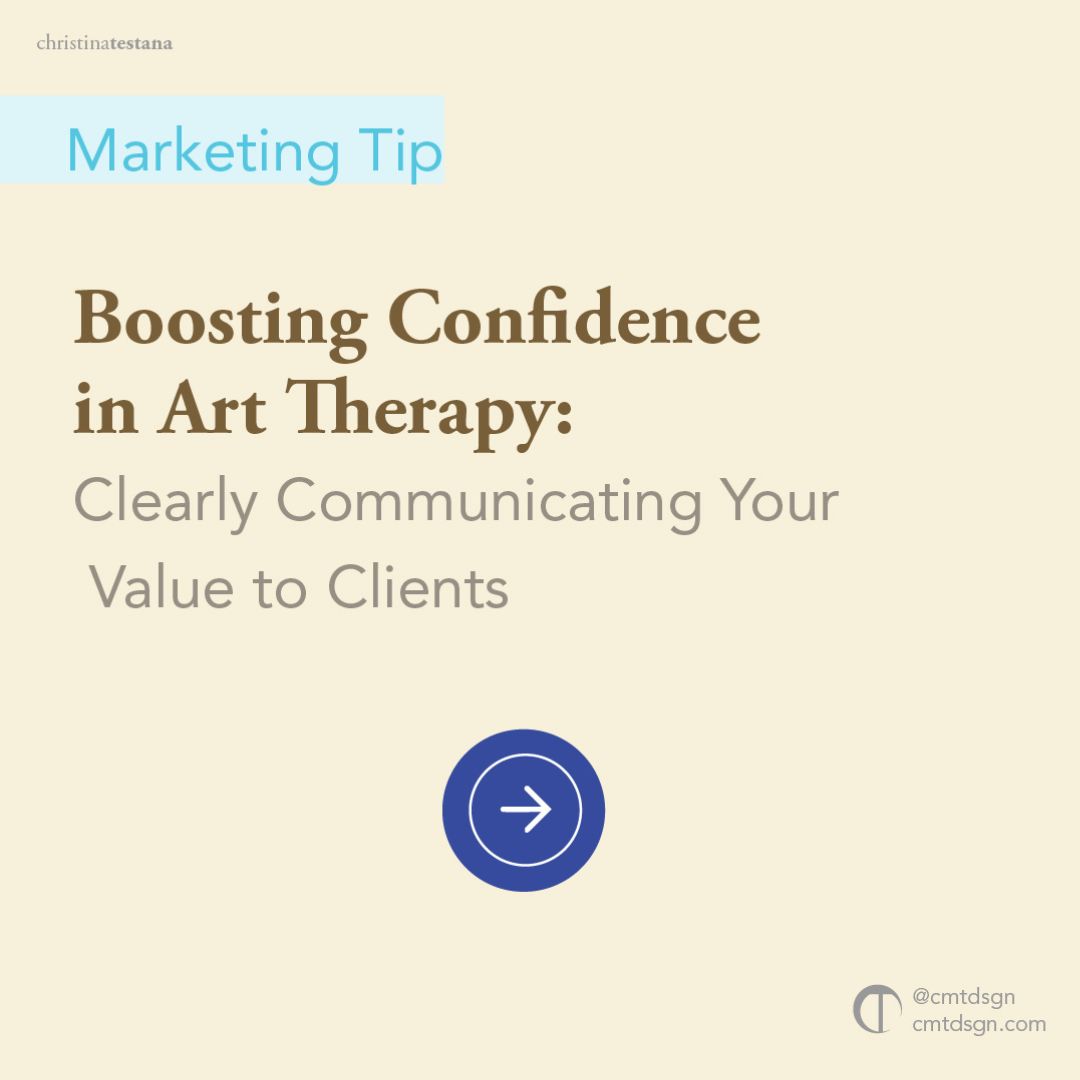Are you currently dreaming of feeling confidence in art therapy when you talk to potential clients about what you do and how you help through art therapy?
Imagine the impact you can make by boosting your confidence and effectively communicating your value to clients.
In todays reading, I’ll dive into the art of empowering yourself as an art therapist, discovering your true direction, and building a loyal community that truly values your unique offerings.
Art therapy is more than just a profession; it’s a journey of self-expression, healing, and connection.
As proactive art therapists, you strive to bring positive change to your business and brand, leaving an mark on the lives of those you touch.
But have you ever felt a nagging doubt or questioned your ability to convey the true worth of your art therapy practice?
Imagine, a world where your confidence radiates through your work, where clients are drawn to your magnetic presence, and where your message resonates deeply with those seeking healing and growth.
It’s time to shed those doubts and embrace your full potential as an art therapist.
But firstly, how do you bridge the gap between your immense talent and the ability to clearly communicate your value to clients?
How can you find your unique direction in a sea of art therapists?
And how do you cultivate a loyal community that not only appreciates your expertise but becomes your biggest advocate?
Hop on the boat as we paddle down the stream and commence on a journey of self-discovery and empowerment.
Together, we’ll explore practical strategies, invaluable insights, and actionable steps to boost your confidence and clearly showcase your worth. Let’s build a community that not only values you but supports your growth as an art therapist.
Get ready to unlock your highest potential and create a thriving practice that leaves an everlasting impact.
The time for transformation is now. Are you ready to ride the stream with me?
Understanding the Value of Art Therapy
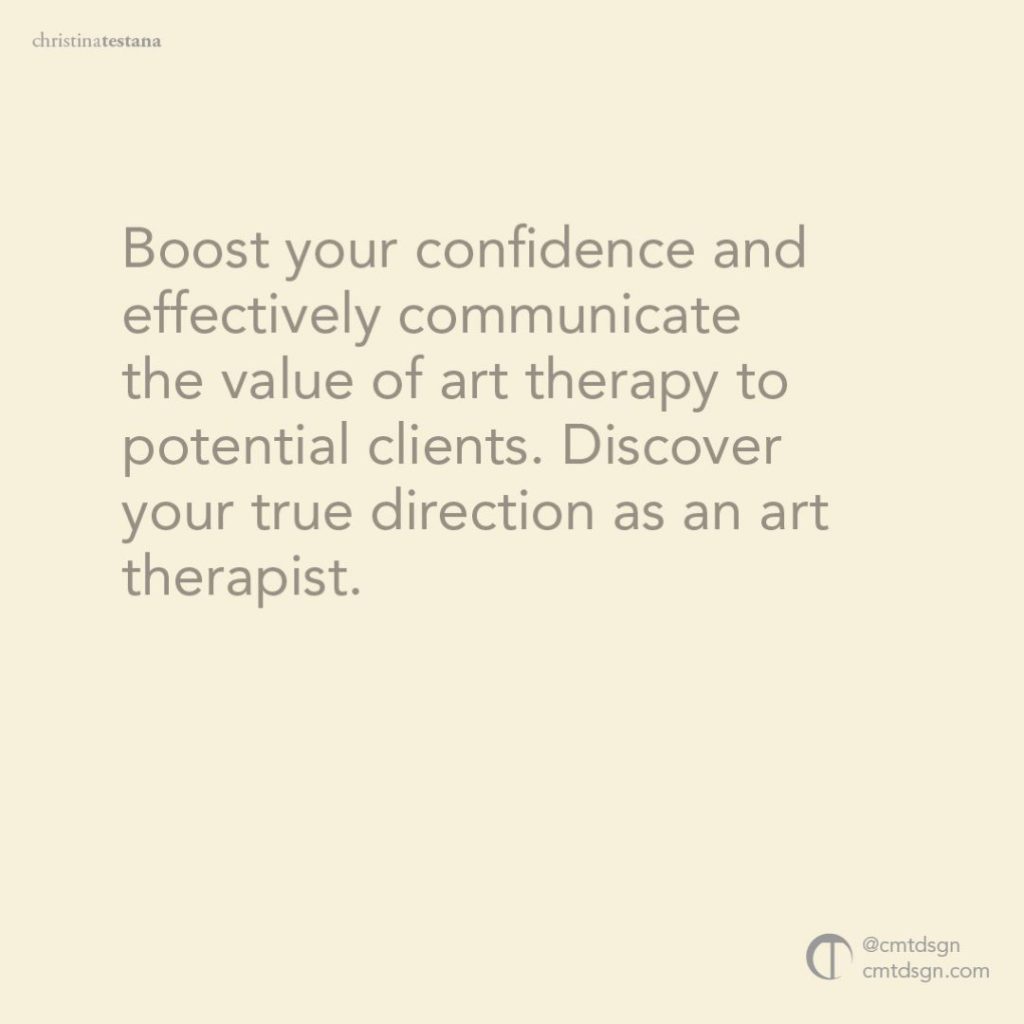
The first thing to start in boosting your confidence learning how to talk to person that as no idea what art therapy is. You in this moment would be the educator and sharing a piece of your knowledge with that individual is a stepping stone in gaining confidence.
Learn to talk about it more and not feel awkward, embarrassed, or afraid to share because of judgement or disinterest.
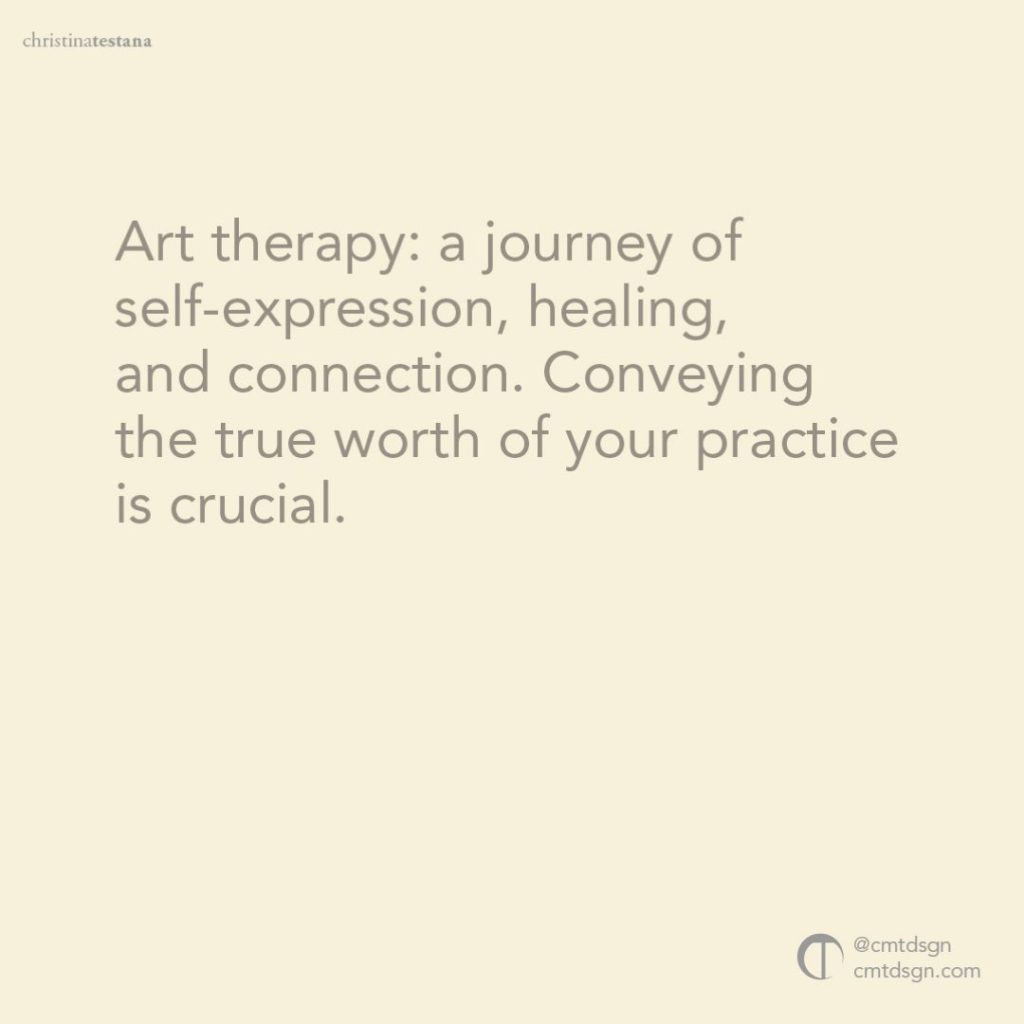
Defining art therapy
The average person doesn’t know what art therapy is about and it could be one of the reasons why they don’t engage with it. You can’t play the assumption game that they would know what you are talking about. I would say it’s usually foreign and unfamiliar to them, so they stick to what has a lot of credibility and proven facts. It’s up to you to spread the word about art therapy and getting it known.
The best way to start is by talking about what is art therapy, explain the concept in a metaphoric way that the average person would understand. Keep it simple and basic. Defining art therapy helps to give the subject form and meaning because before it was foreign but bringing in some similar metaphors, stories and concepts could clear up any ambiguity about it.
Another point to talk about consistently is how it can benefit clients, what does this approach or modality bring to them. Client’s only care about the results and feelings they get after receiving the service. In any form of communication focus on the results it brings to people and tap into describing the feelings. Use the power of storytelling to back up art therapy and its benefits.
This format of communication taps into emotion and feelings giving the reader a stronger connection to the theme. This can get your point across far much easier than trying to technically explain and go on and on then lost your train of thought. Remember this, your past clients are your best friends because they can help you get the message across just as effective.
So you don’t have to do it alone having your past clients at your side will boost confidence in yourself because you have social proof. Use the testimonials you receive from clients because those are client success stories and they can clear anything up by explaining what you do and how art therapy helped them in a different way.
Overall you need to get comfortable in educating your people who engage with you in order to showcase the value art therapy brings. Put meaning to the name and give it form.
Exploring the impact of art therapy
In any of your discussions with people or within your content get into the habit of sharing the positive effects of art therapy on mental health and well-being. This paints the picture of what results client will get after experiencing art therapy and this can clear up any doubts or assumptions they had about art therapy.
When you focus on result driven content and discussions around the topic art therapy you are actually shifting the persons perception of how they see art therapy. This is the primary goal in building trust for art therapy and building confidence in yourself. Make it a common practice to consistently talk about the effects it brings how and how it impacts peoples lives.
If you come at it in this angle internally you will so much better about yourself and the work you do and it will show in your voice and energy. This boost confidence if done over a period of time. I encourage you to start creating content and videos exploring different ways art therapy impacts lives you can even add in client success stories to the content to spice it up.
You must keep to this mindset of educating and sharing knowledge. The more you approach it this way the more you will see yourself confidently get stronger.
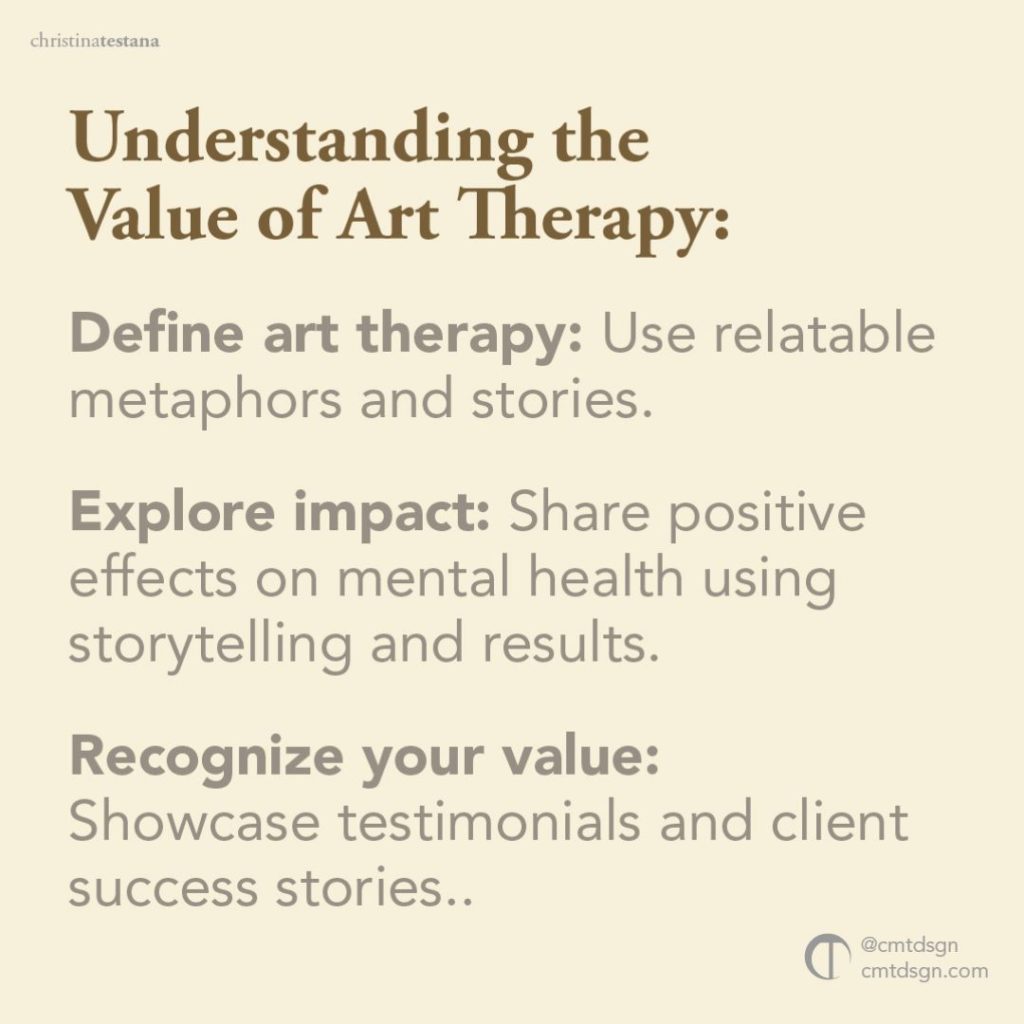
Recognizing the value you bring as an art therapist
This point is important because as an art therapist you need to market the best qualities you possess. Not many have identified what truly makes them special and have a hard time expressing themselves to people. Instead of trying to do all the things under the umbrella. It’s about focusing on quality, in the areas you truly excel.
Think about close friends and family in your life or your favourite client. What have they constantly said to you in terms of skillsets and expertise. Sometimes it goes up and over our heads. These are clues to finding out what stands out to people. You can always take on a challenge for one week to be more aware of your behaviour and activities you do and see what makes you the happiest or something that comes fairly easy to you.
Lastly if you are really stuck, I would have a look at your MBTI personality. Myers Briggs personality test. This test can help identify the type of person you are and strengths you hold. It’s a good framework for someone who might be unsure what would be their superpower. When you express your best skills and expertise your mindset and attitude change. You feel so much better of yourself because you are focusing on the positive aspects of you and that is a confidence booster.

Boosting Your Confidence as an Art Therapist
Self-reflection and self-awareness
It’s in best practice to always check in with ourselves and do a self-reflection in art therapy session. You are so caught up in serving and solving everyone else’s problem. You forget to return to you and there is a potential of forgetting who you are because you haven’t sat with yourself. Knowing your strengths and weakness allows you to firstly set boundaries in your business.
You can’t solve every single problem a client faces, you might be better off solving stress related problems then business mindset problems. It’s up to you to communicate that to others within your brand or else you might be falling into the jack of all trades and trying to strengthen your weaknesses. There is nothing wrong in doing that but it does require your time and energy to improve this.
It’s much better to stick with strengths that come easy to you and marketing those aspects. Why? Well it will keep your confidence up and make you feel better talking with others about you. Your strengths actually help you stand out and hold superpower that other art therapists might not have.
This is your unique selling point and its a tactic to getting known in the market for your strengths. If you are unsure about what your strengths are talk to your close friends, family or clients. They are the best people to get information from and help you identify your best strength. You can even go to the Myers Brigg website to get more information about your personality type to extract any information about strengths there. It’s a great foundation to start from.
Continuous learning and professional development
As a solo art therapist business owner its important to stay up to date with the latest art therapy techniques and research. Keeping yourself fresh in the market is key to keeping up your confidence in art therapy and exploring new avenues in the realm of art therapy.
This gives you a better advantage than others because you are staying on top of the marketing. You are sharing the latest news or tactics that people will run to you for. When you are solo art therapist it’s your responsibility to be a continuously learning to enhance your strengthen even more!
This is also a confidence booster when you continue to learn new things and add to your business and skill set. The more you learn the better you become! You might even create unique offers from all the things you learned.
Seeking support and mentorship
Another great way to boost confidence in art therapy business is to network and collaborate with other art therapists. It’s not about competition anymore its about collaborating, co-creating and working together.
Lifting each other up by the power of team work so that you both grow together and feel confident. When others are supportive of each other there is this feeling of confidence when someone recognizes your skills and wants to work with you.
Push for collaborating with other art therapists on offers, webinars, specials events or products. This makes you feel not alone in the process and being guides for each other.
I would also seek a coach or mentor who is specialized in business and mindset work. They are great people to have in your inner circle to keep you aligned and confident.
They will help with shifting your mindset in communication and connection. Along with relationships with money and boundaries. Some of them even help you carve out your identity to make even stronger.
This help with introducing yourself confidently to other people making you feel true to yourself and believable. I would invest in business and mindset coaching to help you in your business and brand building journey.
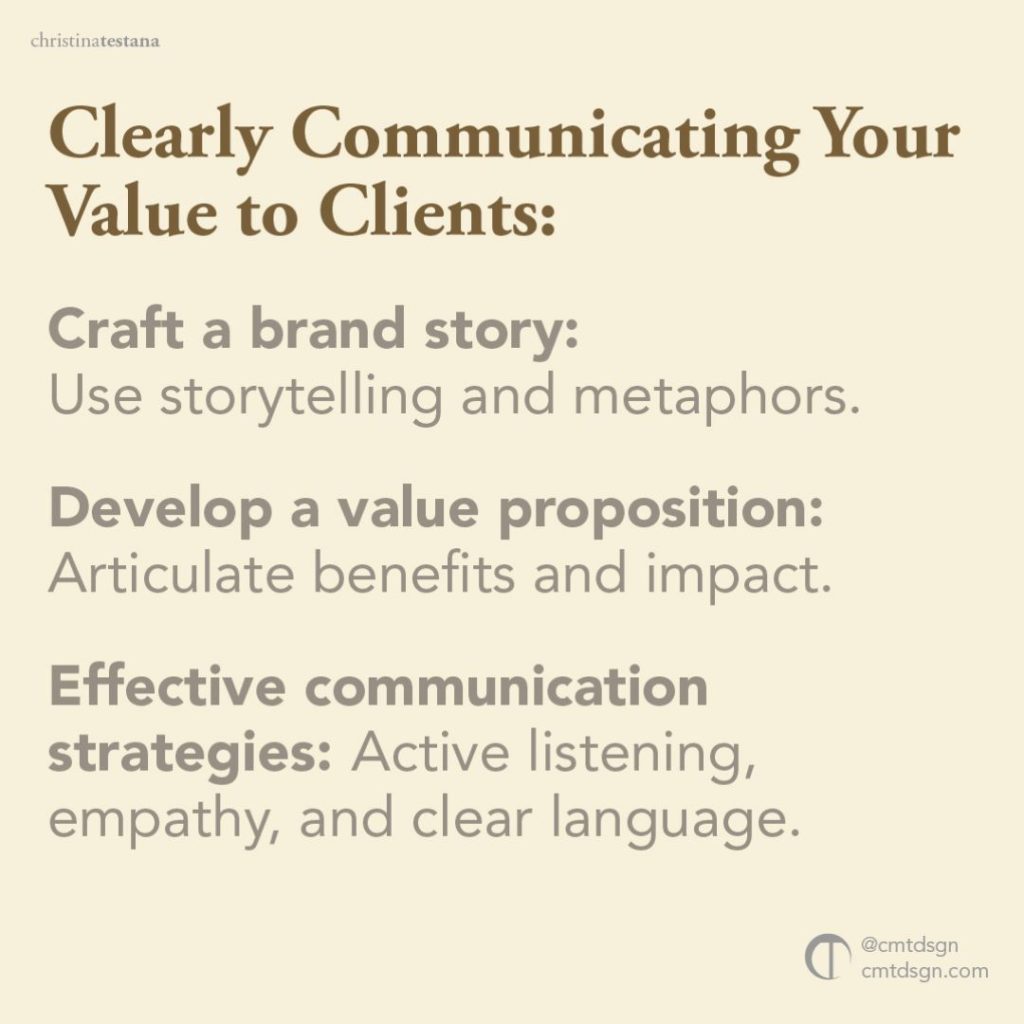
Clearly Communicating Your Value to Clients
Crafting a brand story in art therapy
In the art therapy business branding department, a tactic to communicating your value to clients is through story telling. Crafting a unique story or stories that resonate with your clients is key to helping them understand and see the value you bring. It will require you to use metaphors to help illustrate what would look and feel like.
Plus explain what you do and how you can help. Telling these stories inspires people to take action and feel moved by you. This is a great confidence booster to use this stories to back you up and showcase what an amazing person you are. Those stories are to help clear anything up between you and the client, plus communication in all forms what you are all about. In case you have trouble trying to explain yourself. Let this story do all the work.
B. Developing a value proposition in art therapy As mentioned above about knowing your strengths, this is where you will implement it. I help art therapists articulate the specific art therapy benefits and impact clients can expect from art therapy sessions.
I use your strengths and translate it into your superpower so that it can turn into your differentiator. This is part of how we will find your sweet spot in the market. Keeping with your superpower to help you stay confident in your business and marketing tactics.
Effective communication strategies
Active listening and empathy
If you are struggling to confidently understand the client, I suggest practicing active listening and empathy. The more you just listen and learn about the client and be in their shoes the better you will feel in understanding what they need most. You will feel much more confident it knowing their needs and concerns and be able to speak directly to them and creating better offers.
Clear and concise language
If you are having trouble explaining yourself to people or complex concepts. I would are being more aware in the words and language you use towards others who don’t know therapy.
Spend a week focusing on the complex words you use in your dialog and make a note of them. Is there another simpler word you can use that normal people will understand? Think about simplify your terms as if you were talking to a 7th grader.
Now I don’t mean dumbing it down, I mean using universal words that everyone understands to explain you and a concept. This can help boost your confidence level in being able to articulate words that connect with your clients.
Visual aids and examples
Now it doesn’t always need to be verbal or words to help you feel confident in explaining yourself. Sometimes visual speak louder than words. Within your brand identity, I would use as much visuals as possible to show examples or glimpses of what you do.
Show lots pictures of the culture and environment you bring to help enhance the understanding and engagement factor. So that its less on your trying to explain yourself and more of just showing them, and getting them to engage with the photos.
Try to create mockup art therapy sessions to collect good photos for your website, social media, and marketing materials. It goes a long way to have a collection of images to confidently pull from.

Building a loyal community in art therapy
Identifying target audience in art therapy
Sometimes our confidence drops when we don’t know who we are talking to. We tirelessly yell into the void about who we are but unable to be heard were left disappoint. Then the worst part we start going inwards and pointing arrows at ourselves saying were not good enough. Thats not the case at all.
You are a wonderful creative human who hold art therapist skills and expertise. All you need to do is identify the ideal client and niche you want to help and focus on. When this is in place you will feel a whole lot more confidence in art therapy especially in communication with other people.
You’re face will light up when you can pin point who you help and the certain struggles their having. People around you will also feel confident in working with you because of how clear you are in knowing your niche.
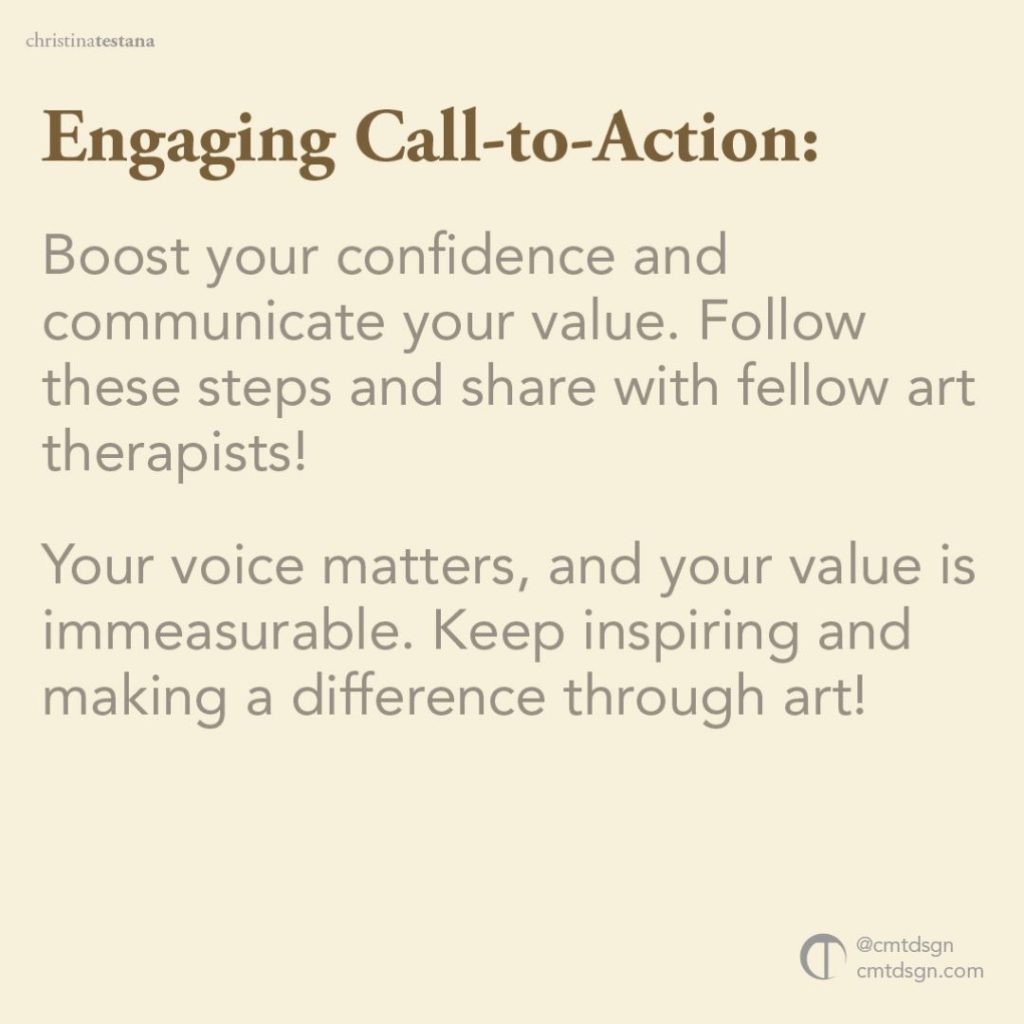
Creating engaging content
Blogging and guest posting
Another great way to feel confidence in art therapy is through blogging and content creation. This is the best place to start educating, shifting perceptions and building trust. It all starts here with crafting the right content that brings value, shift mindset or solve a minor problem.
Doing this once a week will build up a lot of informative blogs that potential clients and read up on to gain more understanding. Like the content speak for you because once its posted, its out there for the world to read and it will be there for eternity!
Your job is to direct your followers, subscribers, potential leads to this blog to get even more detailed content. As mentioned about collaborations you can also feature guest in your posts such as another art therapist or someone else that your ideal client would love to hear. Working together in this way can help confidently combine two perspectives, worlds, and minds to explain art therapist in different ways. Plus you reach more people this way.
Social media presence
From the blog posts you can translate these into small bite size tips to post on your social media. This gives you a starting point in building confidence in yourself and talking about art therapy. You are building trust and through the tips you share and people will begin to perceive the work you do differently. Again let the content speak for its self so you don’t have to tirelessly be on loop trying to get people to understand you and not loose hope and confidence in yourself.
Building trust and credibility
Lastly, to continuously boost confidence in art therapy talk, use these strategies to build trust and credibility. Start with your past clients, collect detailed testimonials that you can share on an ongoing basis to show success stories. Build case studies for your audience to read and learn from in how you got from A to B with a client. It paints the picture in how you problem solved and took the client through the process. You can also use partner affiliations but I don’t know enough about it just yet, but its another way to build credibility.
In conclusion
Empowering yourself as an art therapist and clearly communicating value to clients is a journey that requires self-reflection, continuous learning, and clear communication strategies. By understanding the value of art therapy and consistently sharing its benefits, you can bridge the gap between your talent and the ability to convey your worth to clients. Recognizing your unique strengths and developing a clear value proposition will help you stand out in a sea of art therapists.
Boosting your confidence in art therapy involves self-reflection and self-awareness, as well as seeking support and mentorship from other art therapists and business coaches for professional development for art therapists. Continuous learning and professional development will keep you fresh in the market and enhance your skills.
Clearly communicating your value to clients can be achieved through storytelling, crafting a compelling brand story, and developing a clear value proposition. Effective communication strategies for art therapists such as active listening, using clear and concise language, and incorporating visual aids will further enhance your ability to convey your value.
Building a loyal community requires identifying your target audience and creating engaging content through blogging, guest posting, and maintaining a strong social media presence. By consistently providing valuable content and building trust and credibility, you can attract a community that appreciates your expertise and supports your growth as an art therapist.
In the end, by embracing your full potential as an art therapist, confidently communicating your value, and building a loyal community, you can create a thriving practice that leaves a lasting impact on the lives of those you touch. The time for transformation is now, and with the strategies and insights shared in this reading, you are well-equipped to ride the stream towards a successful and fulfilling art therapy career.
